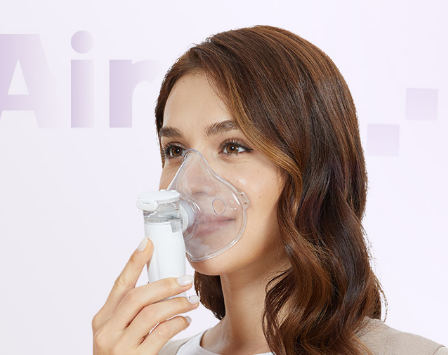With the development of science and technology, great changes have also taken place in medical care. For example, in the past, most drugs were administered by intravenous drip. the process of intravenous drip and administration is painful, and people are relatively resistant. Now there is nebulization therapy, which requires an nebulizer to add drugs to the nebulizer, and then the nebulizer nebulizes the drugs into the human body through the human respiratory system to achieve the effect of drug delivery. This kind of treatment is called nebulization treatment, and the equipment used is nebulizer. There are many kinds of nebulizers on the market. Do you know how to choose the hospital nebulizer?

Regardless of clinical application, this question is answered from the engineering principles of various nebulizers: there are two types of hospital nebulizer on the market at present, ultrasonic nebulizer and compression nebulizer.
1. Ultrasonic nebulizer: the ultrasonic nebulizer uses piezoelectric conductive chip as the transducer to generate high frequency vibration at the megahertz level, which disperses the liquid medicine into countless particles of 1~10μM. The high temperature during the vibration process is easy to change the activity of protein drugs, which has been eliminated.
2. Compression nebulizer: compression nebulizer sprays drugs or suspensions with compressed gas to form nebulized particles (usually 3-8 in diameter)μM)。 It is noisy, bulky, and must be plugged into the power supply for use. Due to the limitation of the site, the nebulizers in hospitals are basically of this kind. The size of the nebulized particles, the noise and volume of the physical and chemical process of our Barry nebulizer are lower than those of the hospital. It is a portable nebulizer, and the nebulization effect is also better.
As far as this is concerned, careful readers will find that why are the diameters of nebulized particles similar? Here will talk about a good therapeutic aerosol with the feellife nebulizer: in the nebulized micro aerodynamics, it is greater than 10μ The droplets of m usually attach to the inner wall of the upper airway such as the nasal cavity and mouth, while 5-10μ The aerosol particles of m will deposit on the inner wall of the first 6 segments of the bronchus, only 1-5μ The aerosolized particles of m will eventually reach the terminal bronchi and alveoli. That is, 1-5μ The nebulized particles of m belong to effective high-quality aerosol particles. If the particles are too large, they cannot enter the lower respiratory tract and cannot have therapeutic effect.
The feellife nebulizer is recommended here. The nebulization rate is 0.15ml/min-0.90ml/min, the working frequency is 110KHz ± 10kHz, and the median particle size is 3μM. The error is not more than ± 25%, which shows that the performance of the feellife hospital nebulizer is very objective.